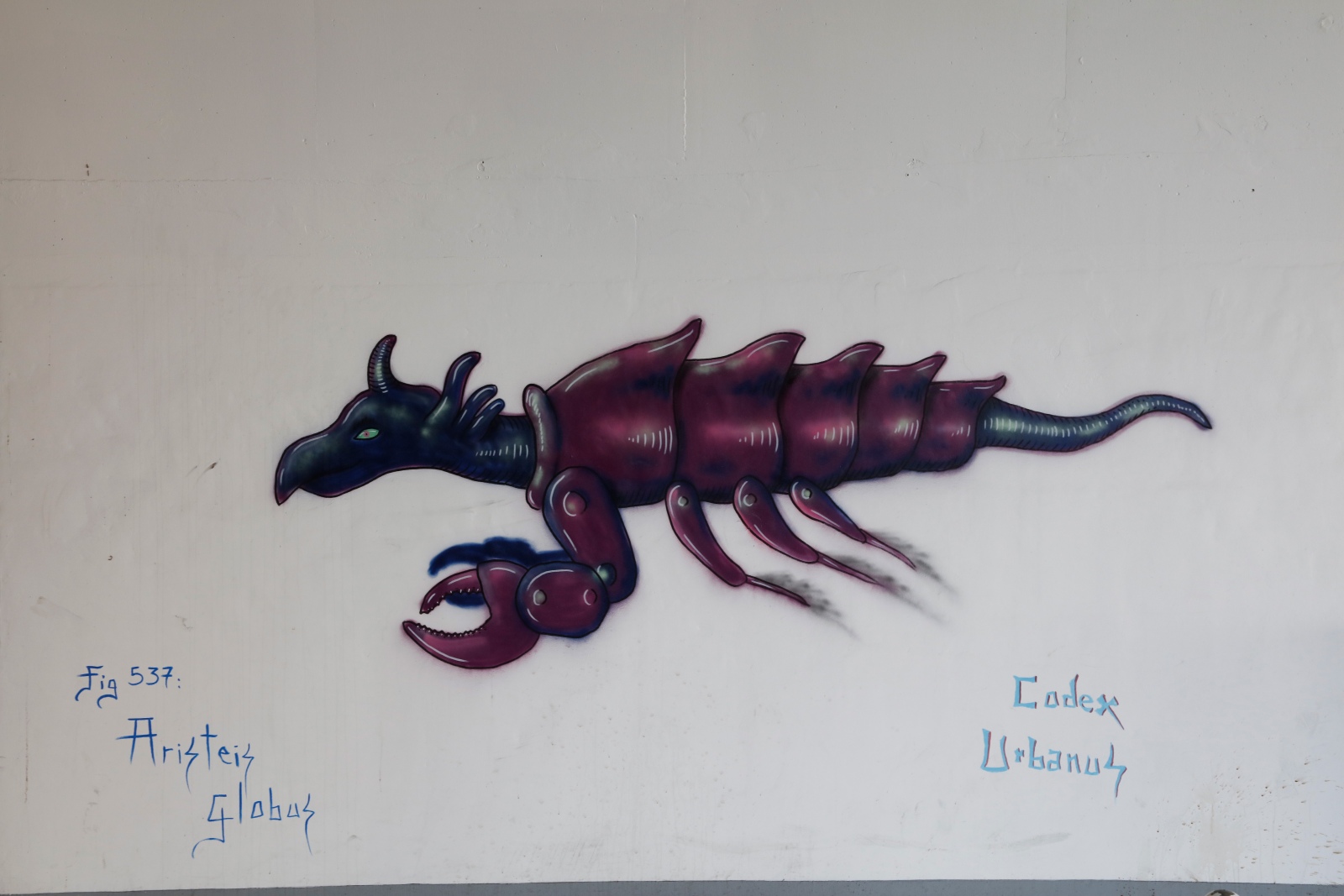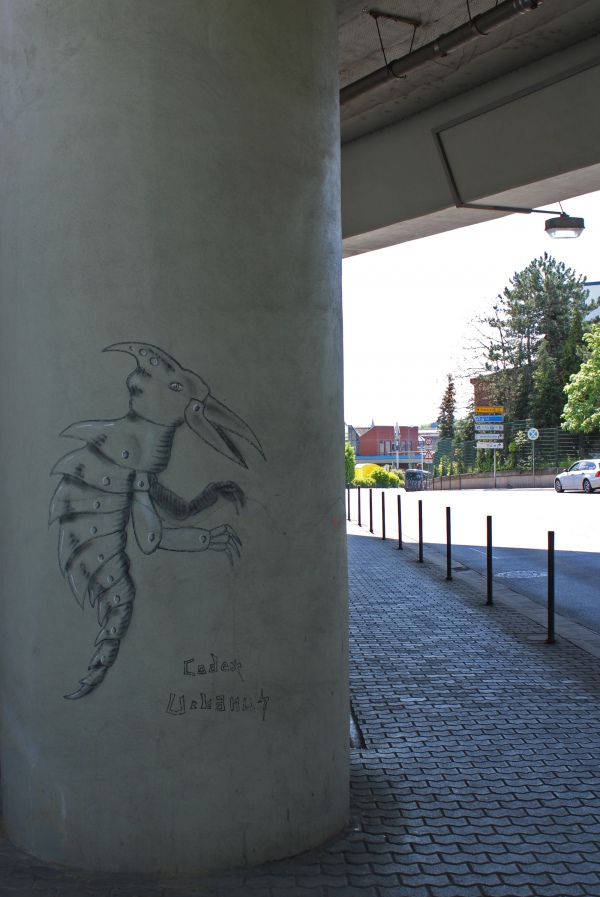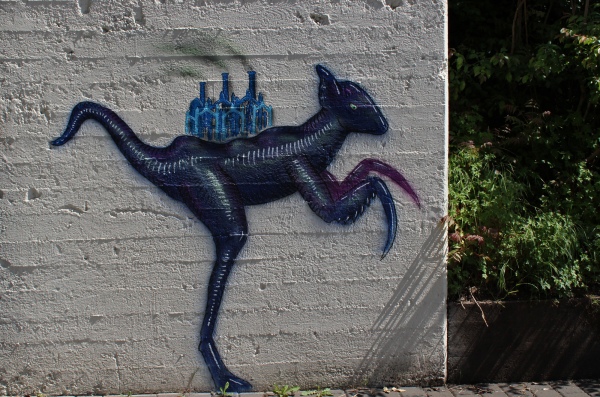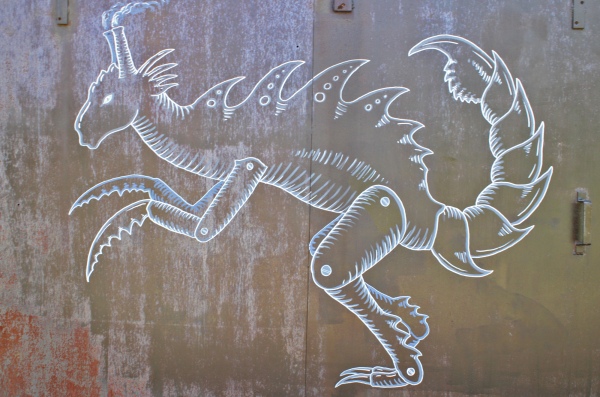
Codex Urbanus Globus Unterf
Copyright: Weltkulturerbe Völklinger Hütte / Karl Heinrich Veith
Artist
Codex Urbanus
Date
2022, in situ
Dimensions
120 x 200 cm
Material
Spray paint, varnish, concrete
Description
In the case Codex Urbanus, the artist’s name and the work are one. Bored with his respectable career, the rock fan Antoine Techenet, born in Paris in 1974 as the son of a pharmacist, began to draw strange beasts. By combining the animals known to science, Codex Urbanus has been creating new species. Because animals need a habitat, he began to let his creatures run wild: on the walls of Montmartre, which has long since been famous as a biotope for beings from the demimonde. Thanks to his good bourgeois education, initially he hesitated to apply the creatures directly as graffiti. He first drew them on ceramic plaques that he then applied. Later, however, he switched to drawing directly on the wall with paints and markers. When the “alchemic vandal” releases his creature, he—always the discoverer—gives them an appropriate Latin name. Hence we encounter Suricatta Sepianæ, the cuttlefish-meerkat, and Mamothos Araneus, a hybrid of mammoth and spider.
How do the native creatures react to these invasive species? We consult Codex: “At first glance, they look disturbing, but my monsters are a lot of fun for children in particular.” Curiosus Homines of all ages now set off on a voyage of discovery in the postindustrial biosphere on the path from the Völklingen Ironworks to Völklingen City.

Fig 662: Canis Mechachelodo
2022, in situ

No title
2022, in situ

No title
2022, in situ

No title
2022, in situ

Fig 574: Chimera Volklingensis
2022, in situ

